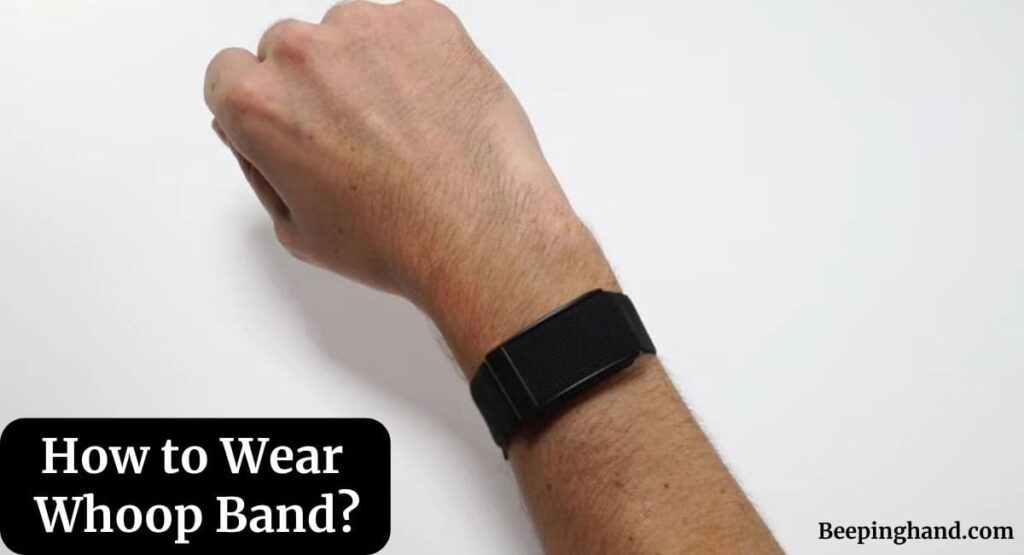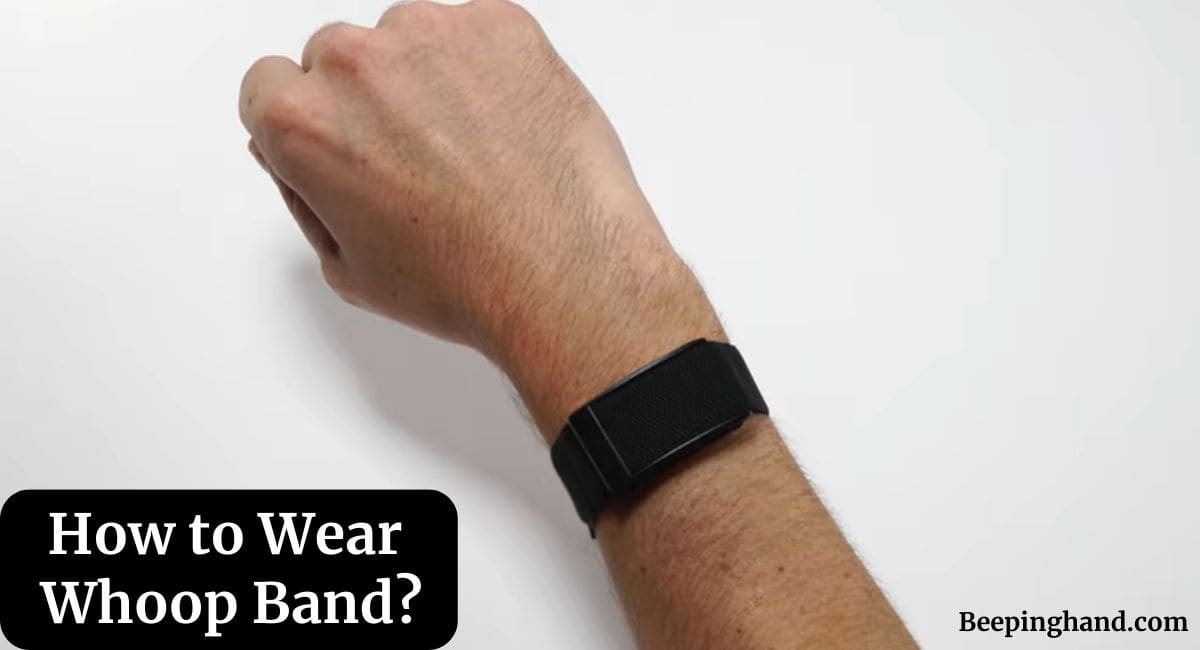When it comes to optimizing athletic performance and monitoring health, wearable fitness trackers have become a popular choice among fitness enthusiasts. One such device that has gained significant attention is the Whoop band.
The Whoop band is a sophisticated fitness tracker that provides valuable insights into your body’s metrics and helps you make data-driven decisions to improve your overall well-being.
Here, we will explore How to Wear Whoop Band effectively and get the most out of this innovative device. So, make sure to read this article.
How to Wear Whoop Band

If you are wondering to know the correct way of wearing the Whoop Band then you are at the right place. Here, we’ve shared detailed information.
Why Choose the Whoop Band Over Other Fitness Trackers?
Unlike traditional fitness trackers, the Whoop band’s focus is on performance optimization rather than just step counting. It offers advanced metrics like HRV and strain, which provide a deeper understanding of how your body responds to different stressors.
Additionally, the Whoop band’s community and challenges foster a sense of camaraderie and motivation, keeping users engaged and accountable.
Setting Up Your Whoop Band
To begin using the Whoop band, you need to set it up correctly. Start by pairing it with your smartphone via Bluetooth and creating your personalized profile. Afterward, choose the membership plan that suits your needs, as it unlocks various features and benefits.
What are the Different Ways to Wear WHOOP?
WHOOP offers various accessories that allow you to wear the band in different styles, catering to different preferences and activities.
- Bicep Band – The default method is wearing the WHOOP band on the upper forearm, but it can also be worn on the bicep using a specialized bicep band. This alternative position is useful for individuals who find the forearm placement uncomfortable or impractical during certain exercises.
- Slim Band – The slim band is a more discreet option for those who prefer minimalistic wearables. It can be worn on the wrist like a traditional fitness tracker.
- Clothing Clip – WHOOP provides a clothing clip that allows you to attach the WHOOP pod to your workout attire, offering an unobtrusive way to monitor your biometric data.
Wearing the WHOOP Band Correctly
Wearing the WHOOP band correctly is vital to obtaining accurate readings. The device relies on its sensors to track various biometric data, including heart rate, skin temperature, and motion.
If the band is not worn correctly, it may fail to collect accurate data, leading to unreliable fitness insights.
Step-by-Step Guide to Proper Wear
- Positioning the WHOOP Band – Place the WHOOP band on your dominant arm, either left or right. The device should be snug against your skin, but not too tight that it causes discomfort.
- Orientation of the WHOOP Pod – The WHOOP pod (the core component of the band) should be positioned on the underside of your arm, aligned with your ulna bone. This ensures the optimal placement for accurate data collection.
- Ensuring a Secure Fit – Fasten the band securely to prevent it from sliding or rotating during physical activities. The band should not be too loose, as it may affect the data accuracy.
Should WHOOP be on the Left or Right Arm?
There is no hard and fast rule regarding which arm to wear the WHOOP band on. The choice largely depends on your personal preference and comfort. Some users may find the dominant arm more convenient as it is less prone to motion artifacts during exercise. However, others may prefer their non-dominant arm for various reasons.
Where is the Best Place to Wear a WHOOP?
The two primary locations for wearing the WHOOP band are the bicep and forearm. Each has its advantages and disadvantages.
- Bicep Placement – Placing the WHOOP band on the bicep provides a different set of motion data, which may be beneficial for certain sports or exercises. Additionally, some users find it more comfortable on the bicep, especially during intense workouts.
- Forearm Placement – The forearm is the default position recommended by WHOOP. It is more practical for everyday activities and easier to access for charging. Moreover, the sensors may capture data more accurately on the forearm due to its proximity to the wrist.
How Tight Should WHOOP Bicep Band Be?
The WHOOP bicep band should be tight enough to stay securely in place during activities but not overly tight so that it restricts blood flow or causes discomfort. A good rule of thumb is to ensure that you can comfortably fit one or two fingers between the band and your skin. This ensures proper data collection while keeping the band comfortable to wear throughout the day.
Wrapping Up
This article is all about How to Wear Whoop Band. Wearing the WHOOP band correctly is crucial for accurate data tracking and reliable fitness insights. Whether you prefer the bicep or forearm placement, make sure to follow the step-by-step guide to ensure the best results.
Personal preference and comfort determine which arm you choose to wear the WHOOP band on, and the bicep band offers an alternative option.
I hope this article was helpful to you and if you still find any queries then you may ask in the comment box. For more information visit the Help and Support Page of Whoop
FAQ’s How to Wear Whoop Band
Can I wear the WHOOP band on my non-dominant arm?
Yes, you can wear the WHOOP band on your non-dominant arm if you find it more comfortable.
Does WHOOP offer different band sizes?
Yes, WHOOP offers various band sizes to accommodate different wrist and bicep measurements.
Can I wear the WHOOP band during swimming?
Yes, the WHOOP band is water-resistant and safe to wear during swimming.
Is the WHOOP band suitable for children?
The WHOOP band is designed for adults and may not be suitable for children due to sizing and data accuracy.
Can I switch the WHOOP pod between bands?
Yes, the WHOOP pod is interchangeable between bands and accessories offered by WHOOP.
